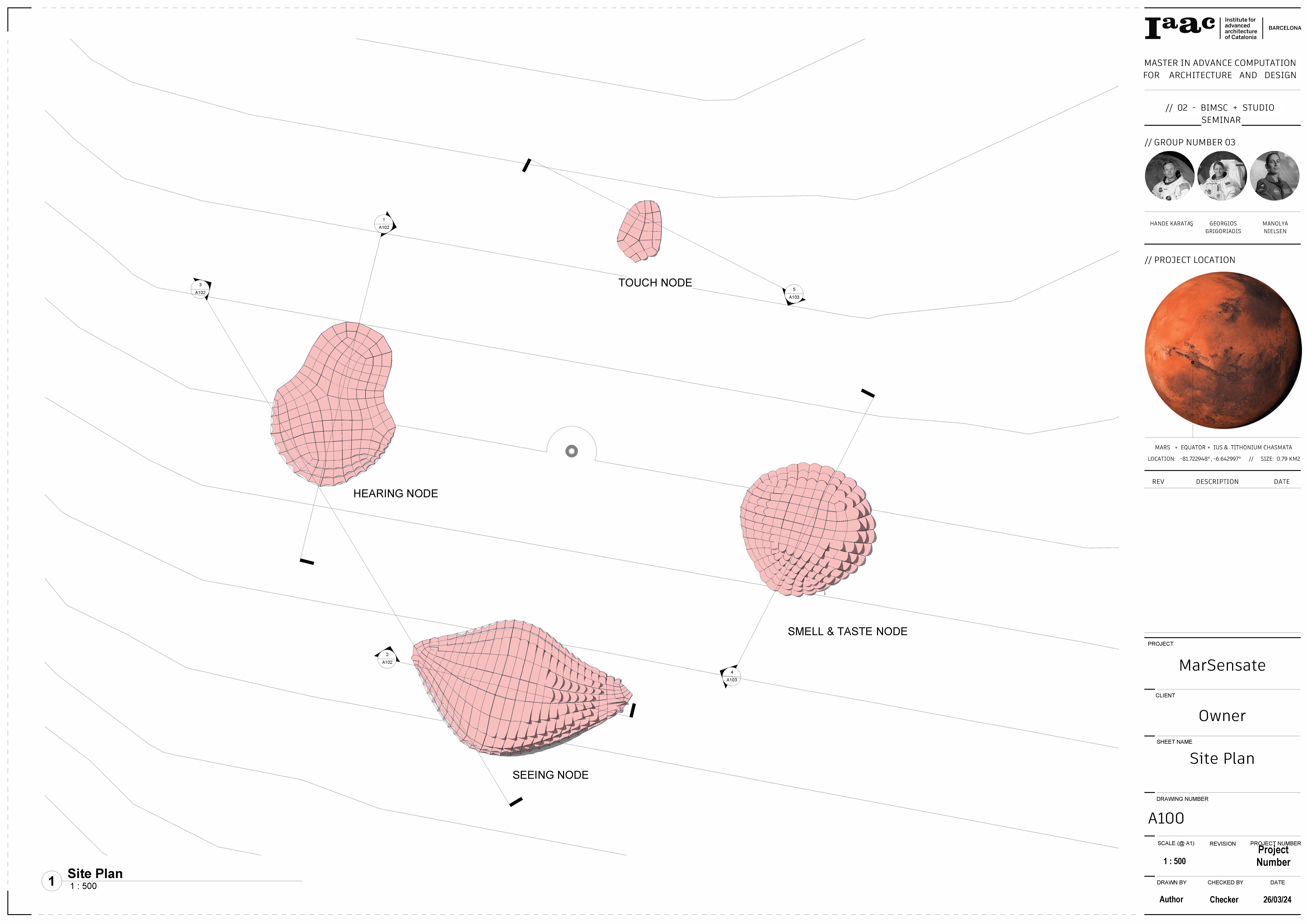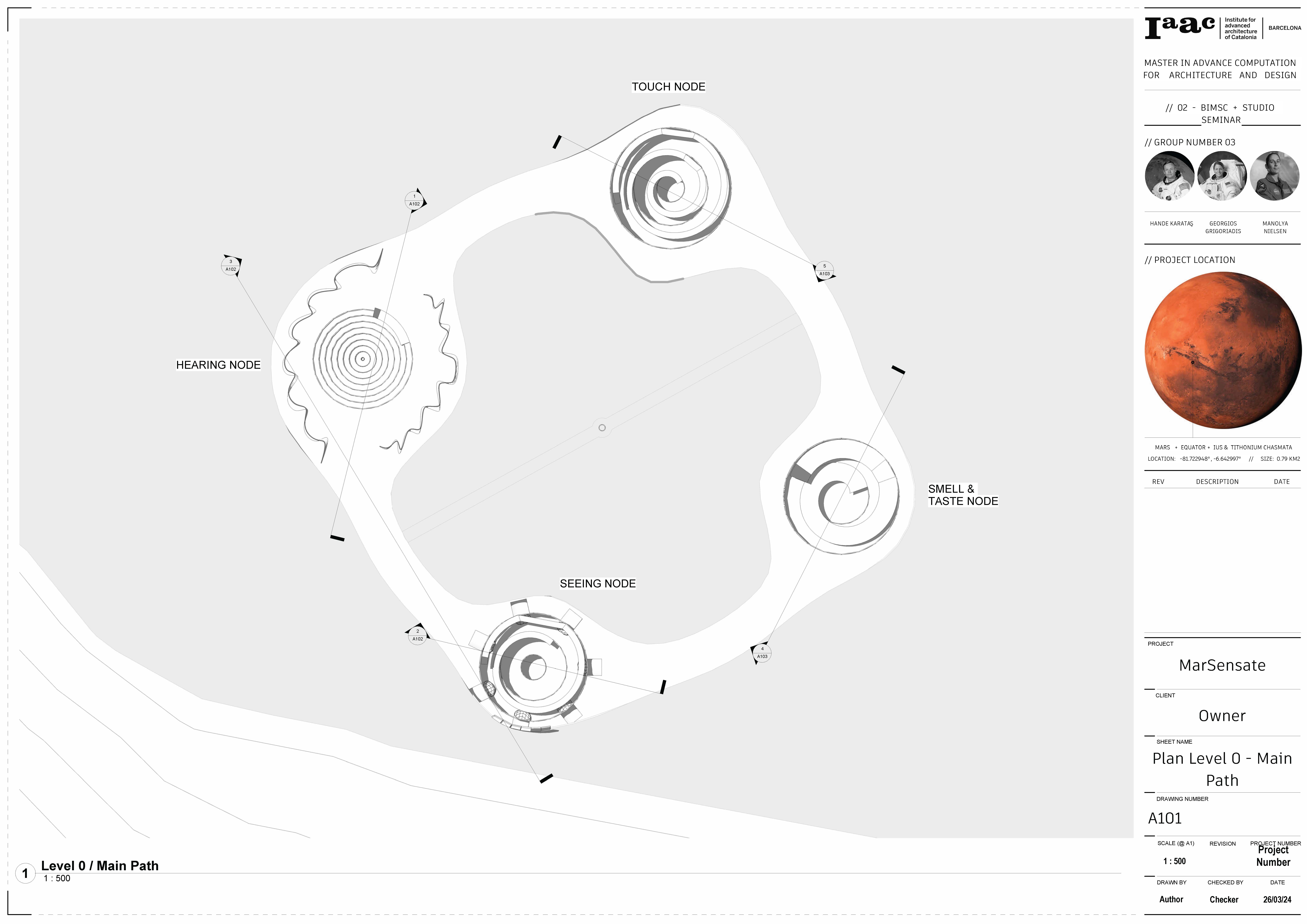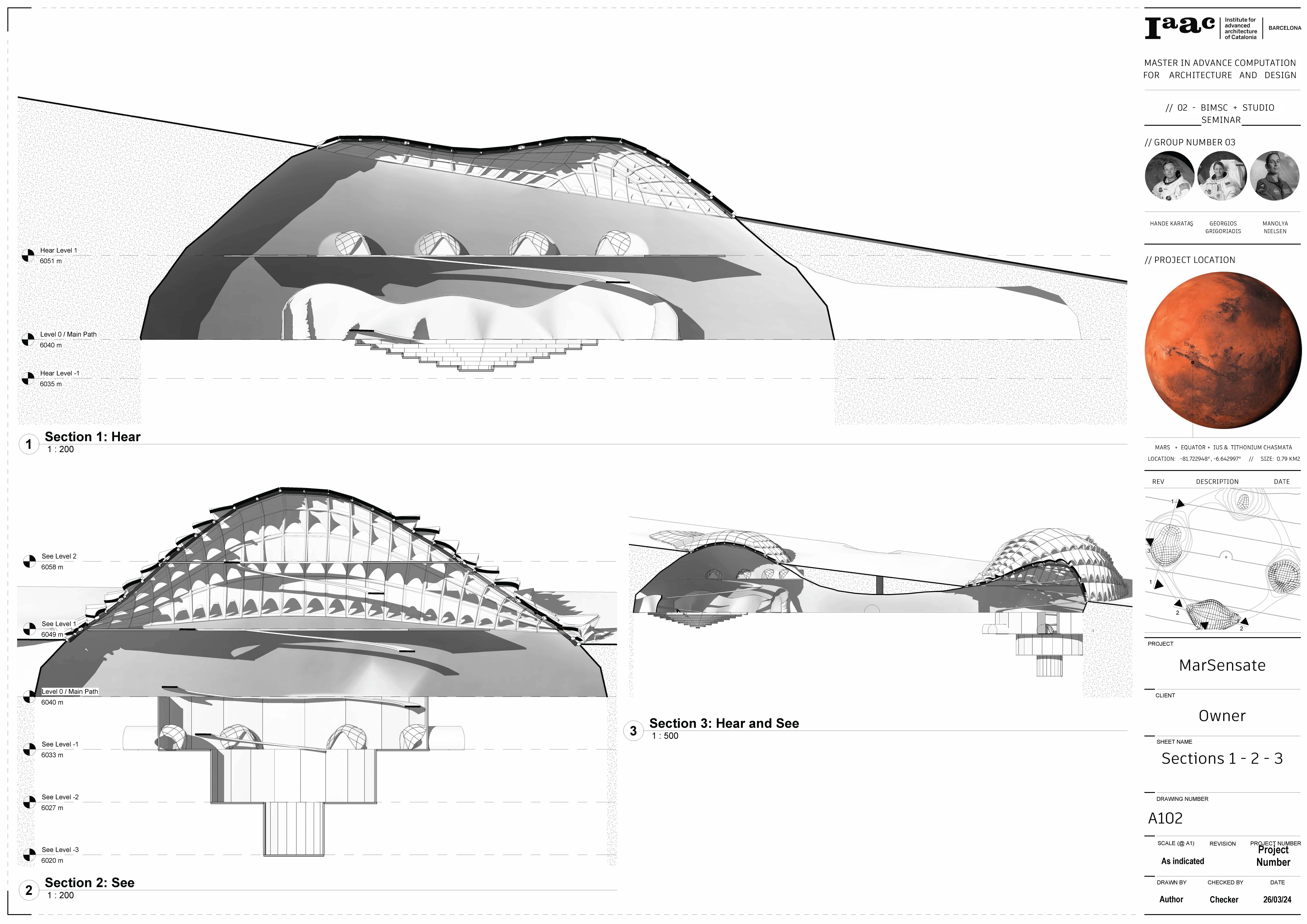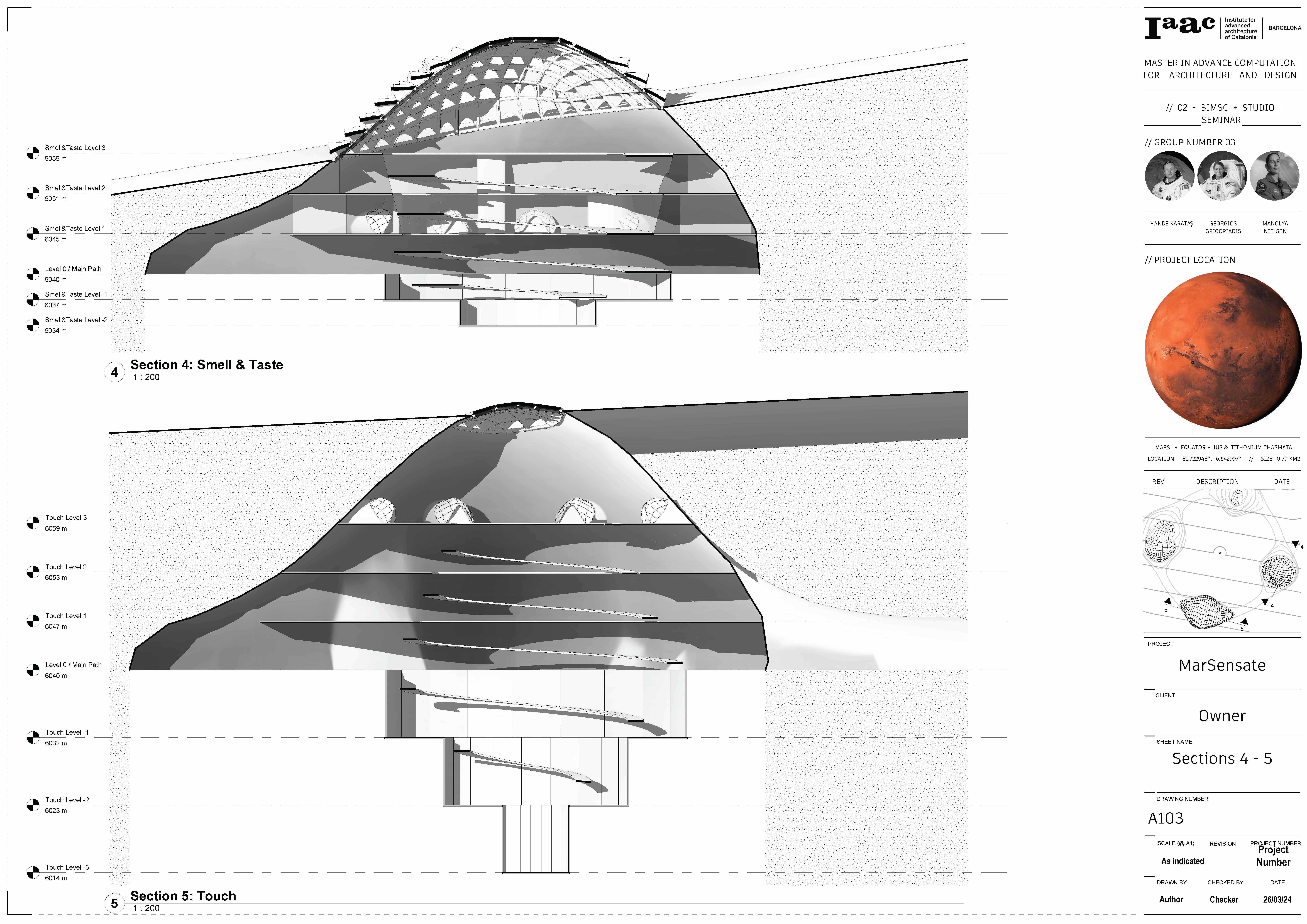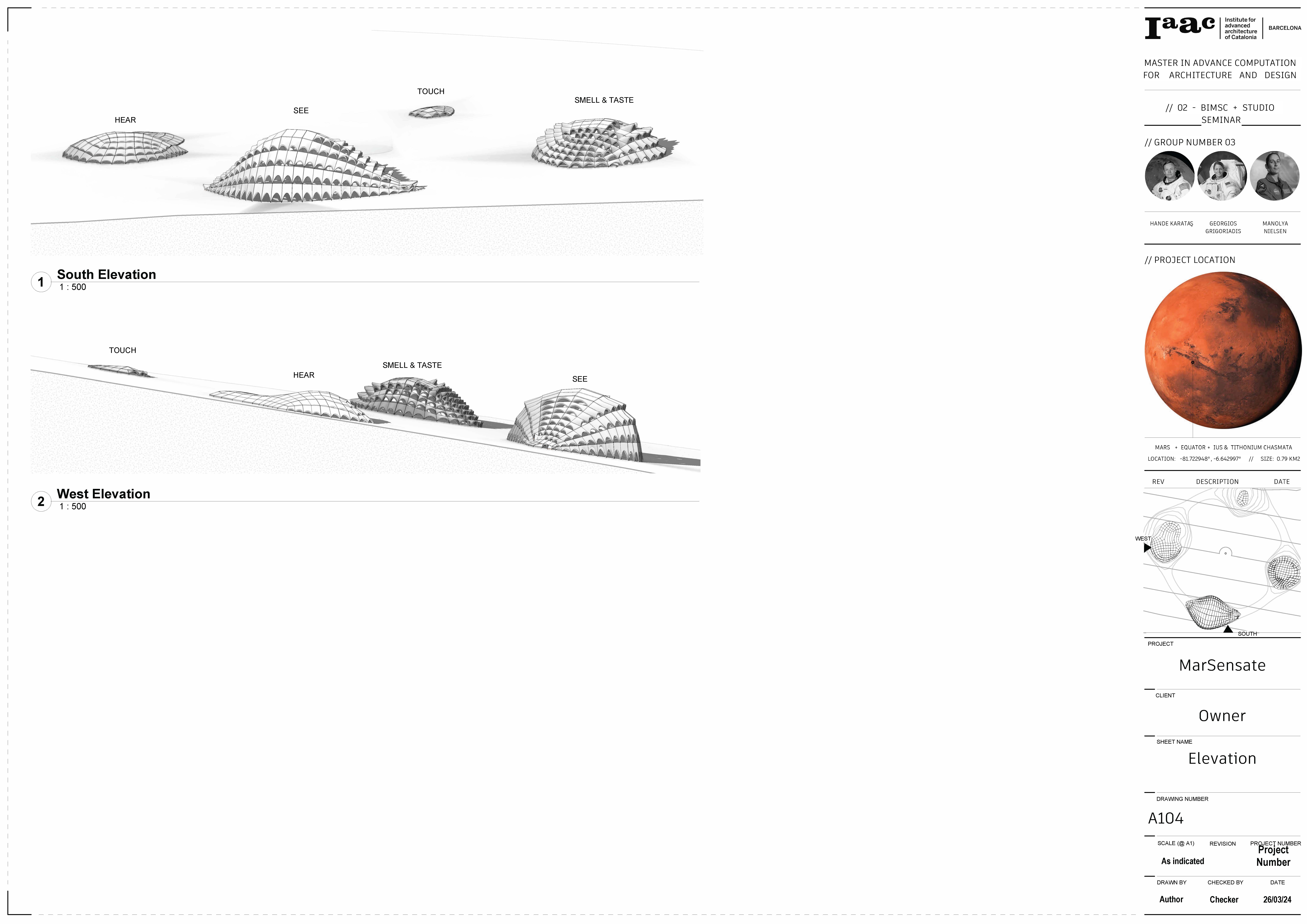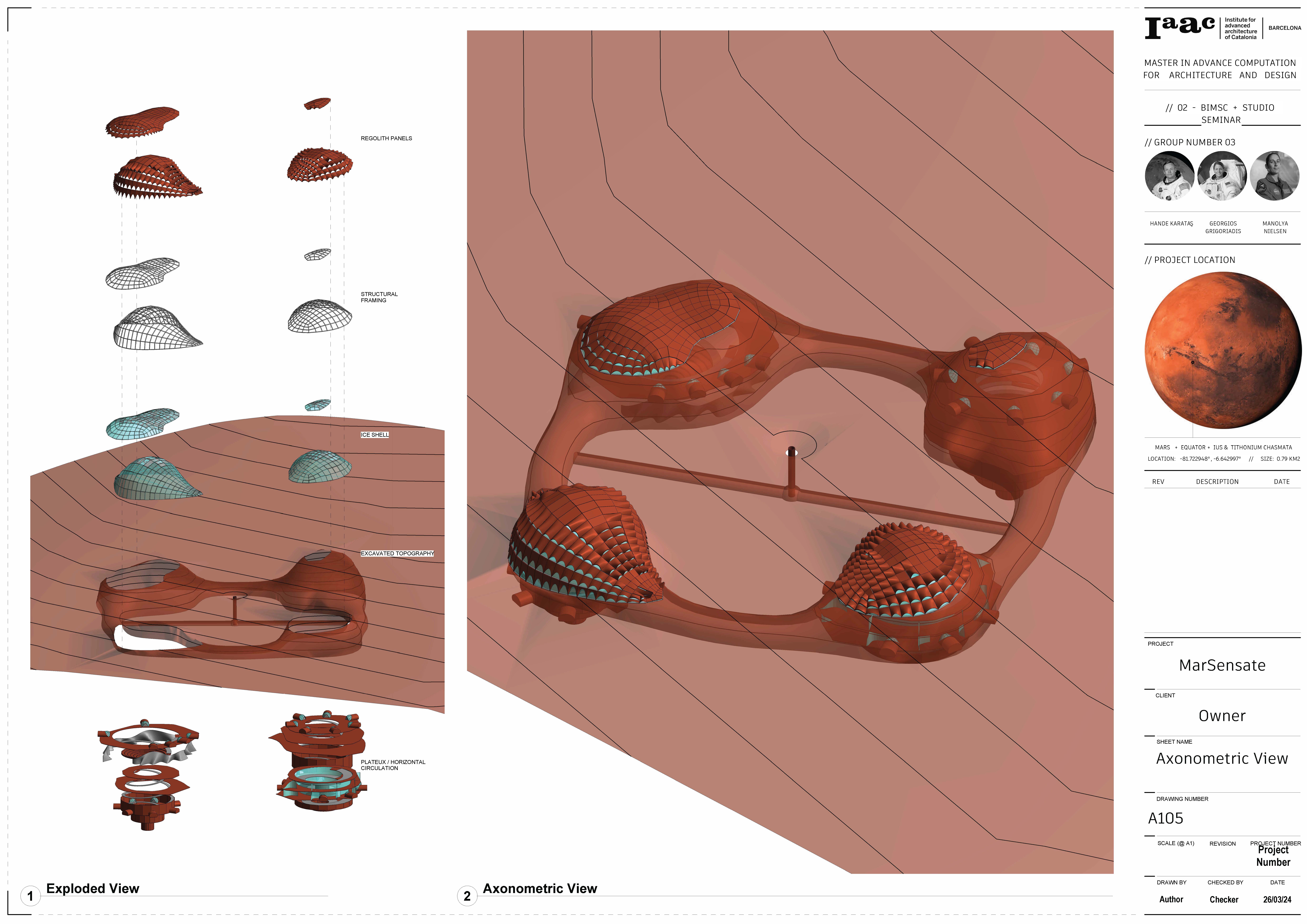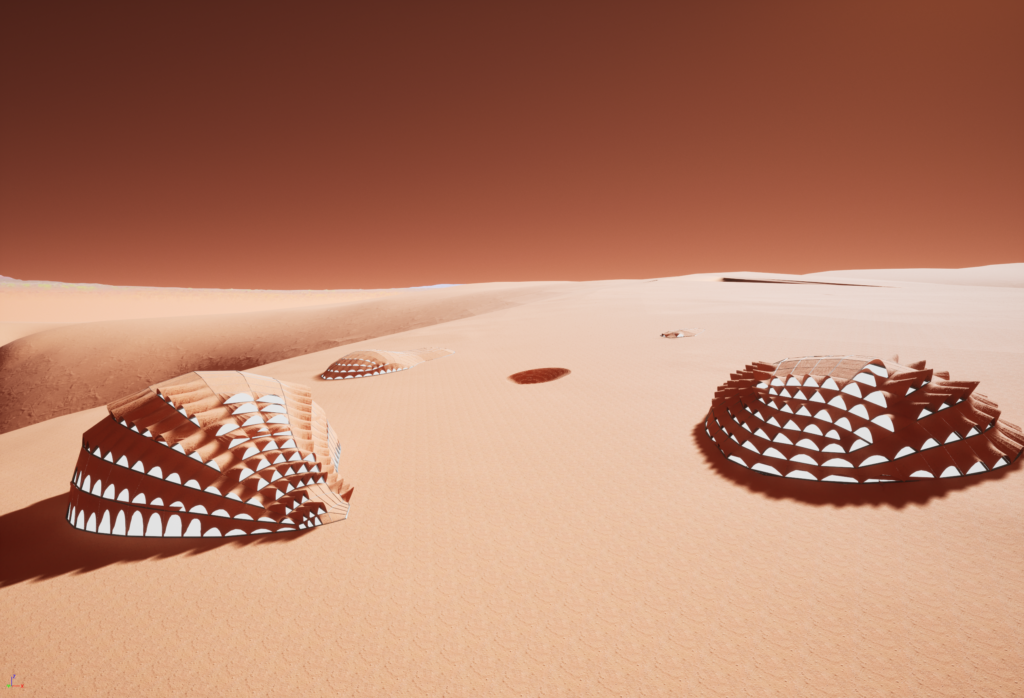
Project Concept
In Marsensate we explore designing on Mars in order to habit a Marsian colony. The primary goal of our colony was based around Sprituality, to provide a more human environment that appeal to everyone, regardless of their beliefs, genders, preferences, and we focused on the aspect that we all have in common, which are the senses. Having chosen a complex topic, we started our journey with AI images, trying to discover creation of spaces, that would stimulate a specific sense. We chose a subtractive method of excavating the ground in order to carve all our sense nodes within the Martian topography. This was to ensure that it would always be protected from the harsh martian environment such as the low temperatures, meteorites, radiation and sandstorms. The top of the sense nodes are above ground to achieve light and protected by 3D printed ice as well as 3D printed regolith panels.

Precedent Projects
Among many example projects that we have searched, we were especially amazed by these two precedents. In Nasa 3D Printed Habitat Challenge by Hassell, we got inspired by the use of regolith as a protective shell, and a way of blocking the sunlight, acting as shaders. In Mars Ice House by Clouds Architecture Office we got inspired by the used of 3D printed ice that acts as both an insulator and a visual connector.
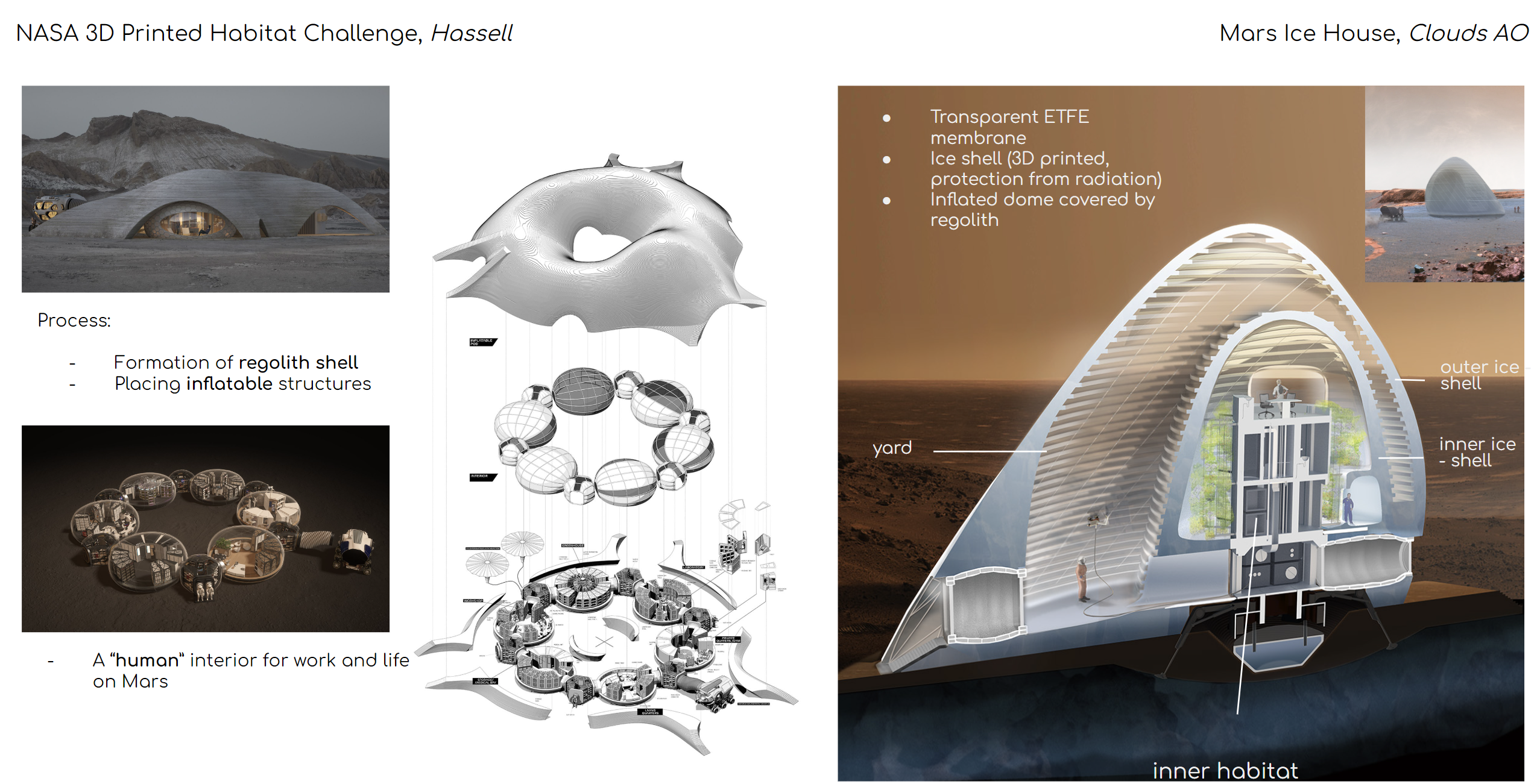
Site Selection
To select the ideal location on Mars for this function, we chose to have a low value of slope, to facilitate the circulation between all the independent spaces of senses. As well as a location that would be visible from everywhere in the city of Aleph, within everyone’s perspective as the spiritual unit of the city.

After choosing our site location, we started by evaluating the formal approach for adaptation in Mars. We chose to place our proposal mostly underground, proceeding in a subtractive manner. This way we control the amount harmful radiation and sunlight, also adjusting it based on the sense we want to stimulate and we create a safe shelter underneath the topography, against the harsh environment of Mars.
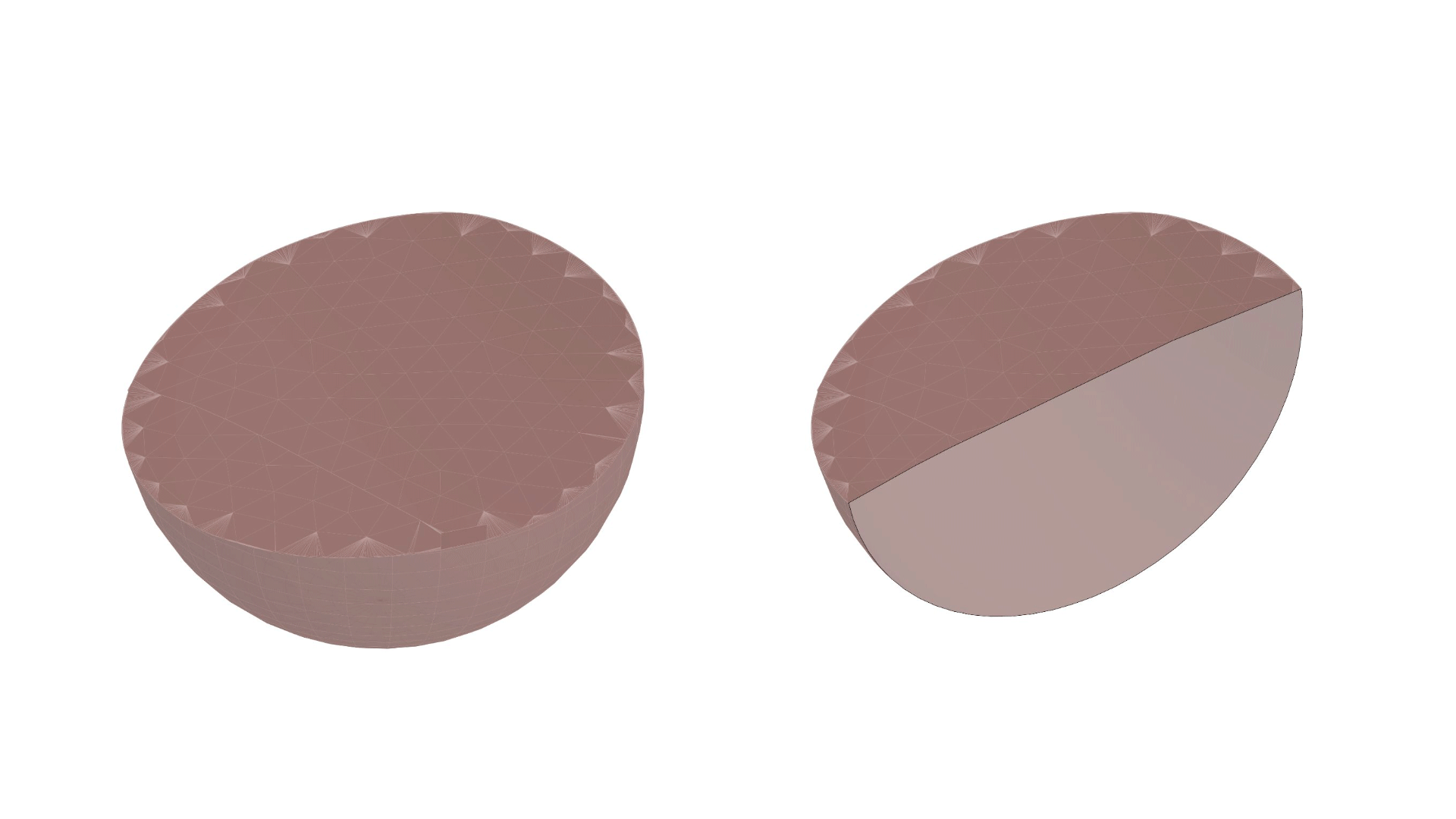
Design Development
Matrix of Parameters

Starting with having the center of our site, we go 20 meters down at this point in order to create the torus shape underground which is the main path of our project. This torus shape symbolizes the loop of life. A connection is provided from the above ground to the torus via a lift. Then we start specifying the locations of our nodes. We decide on having four nodes, stimulating the five senses. In the location parameter, we are simply allowed to select how much the nodes will be buried in ground, or how much light it will have.
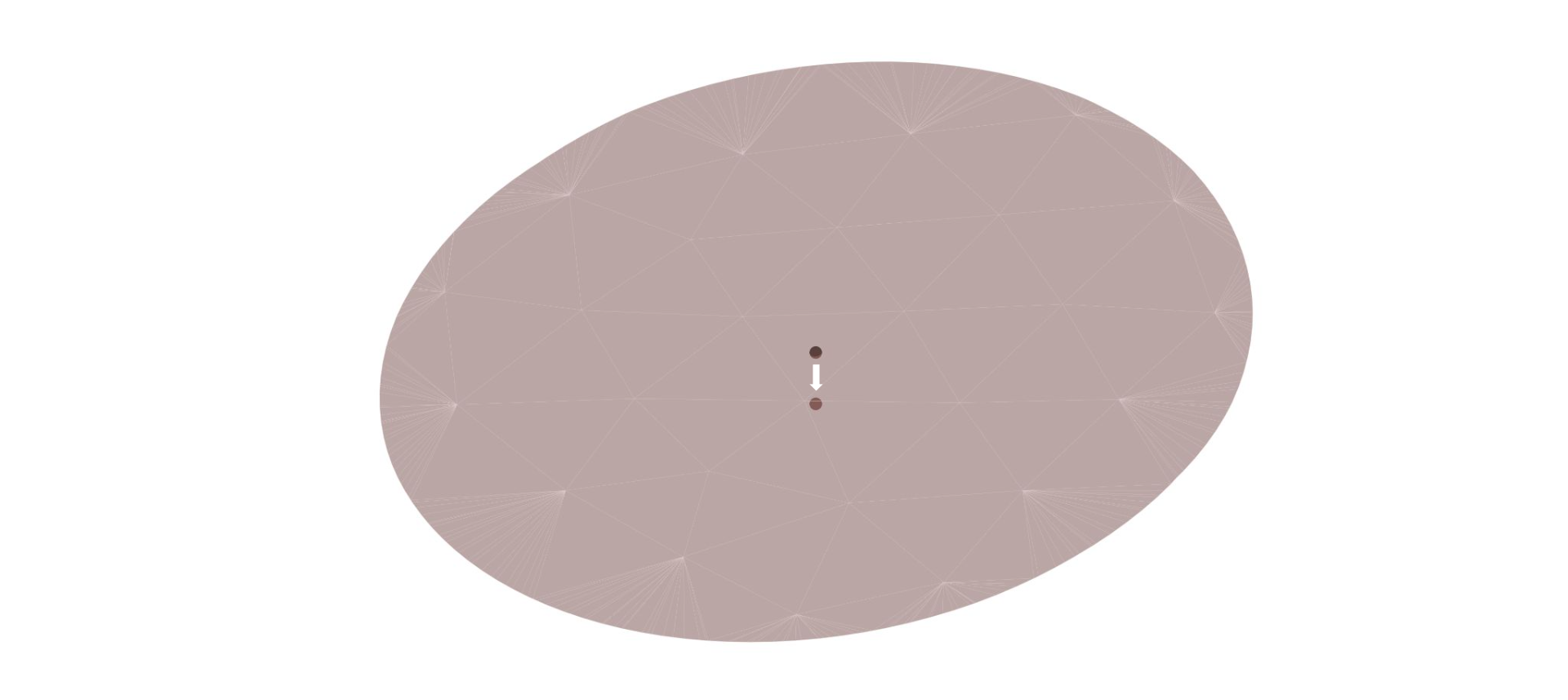
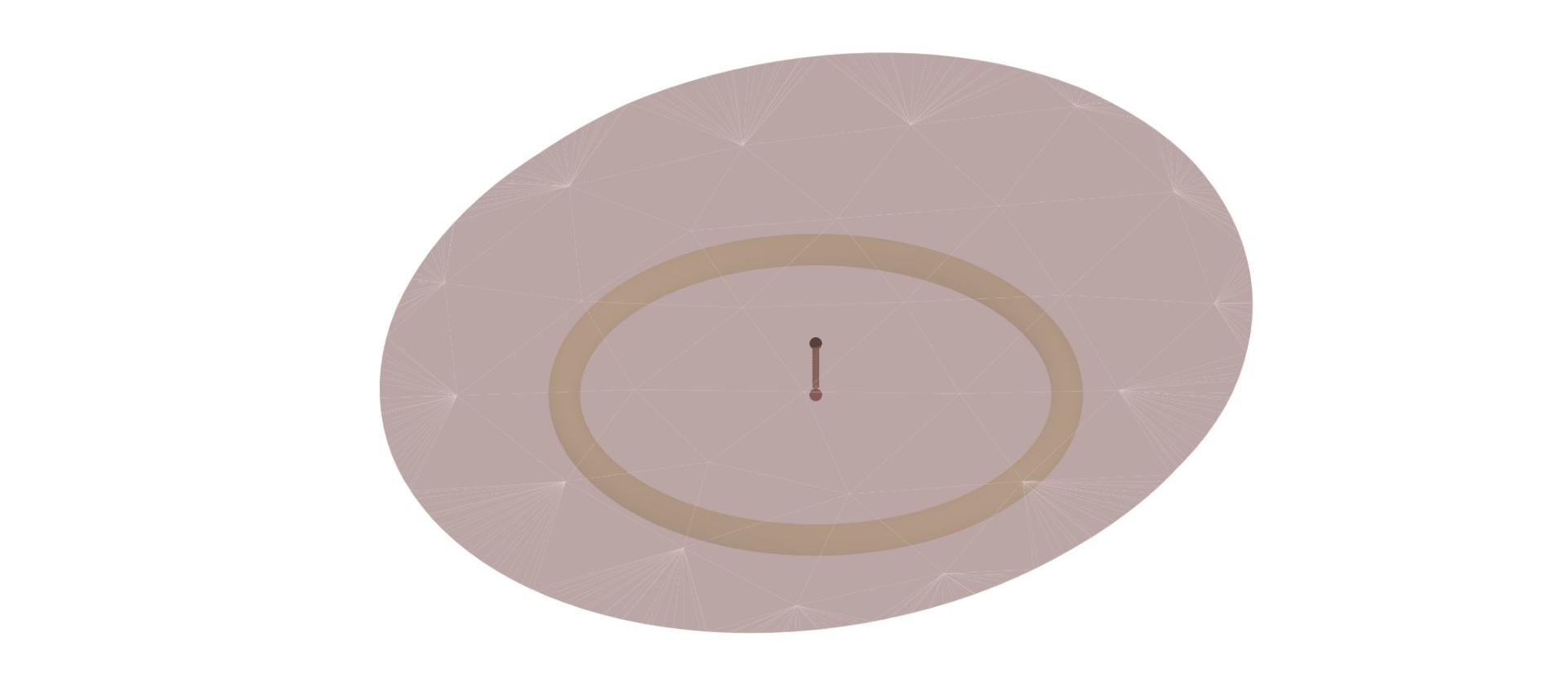
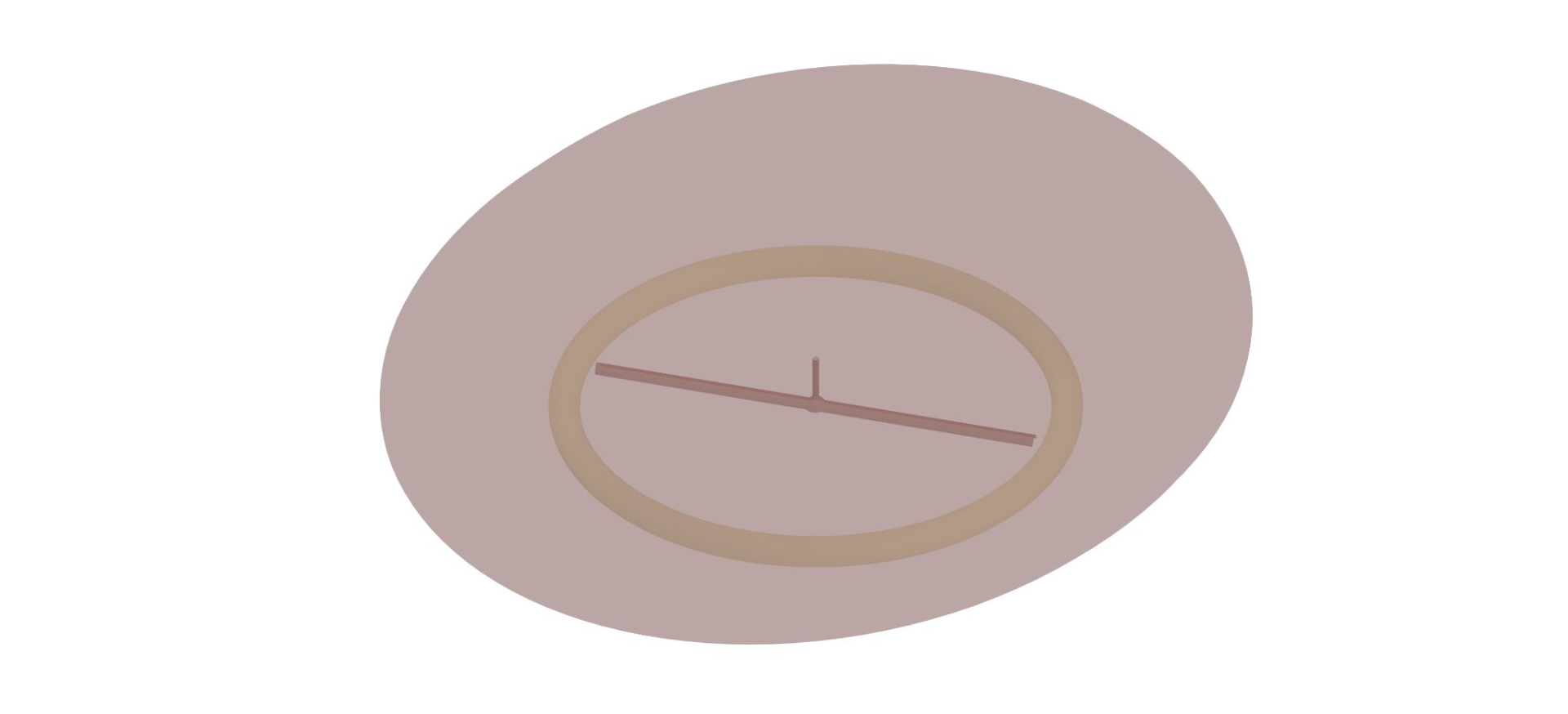
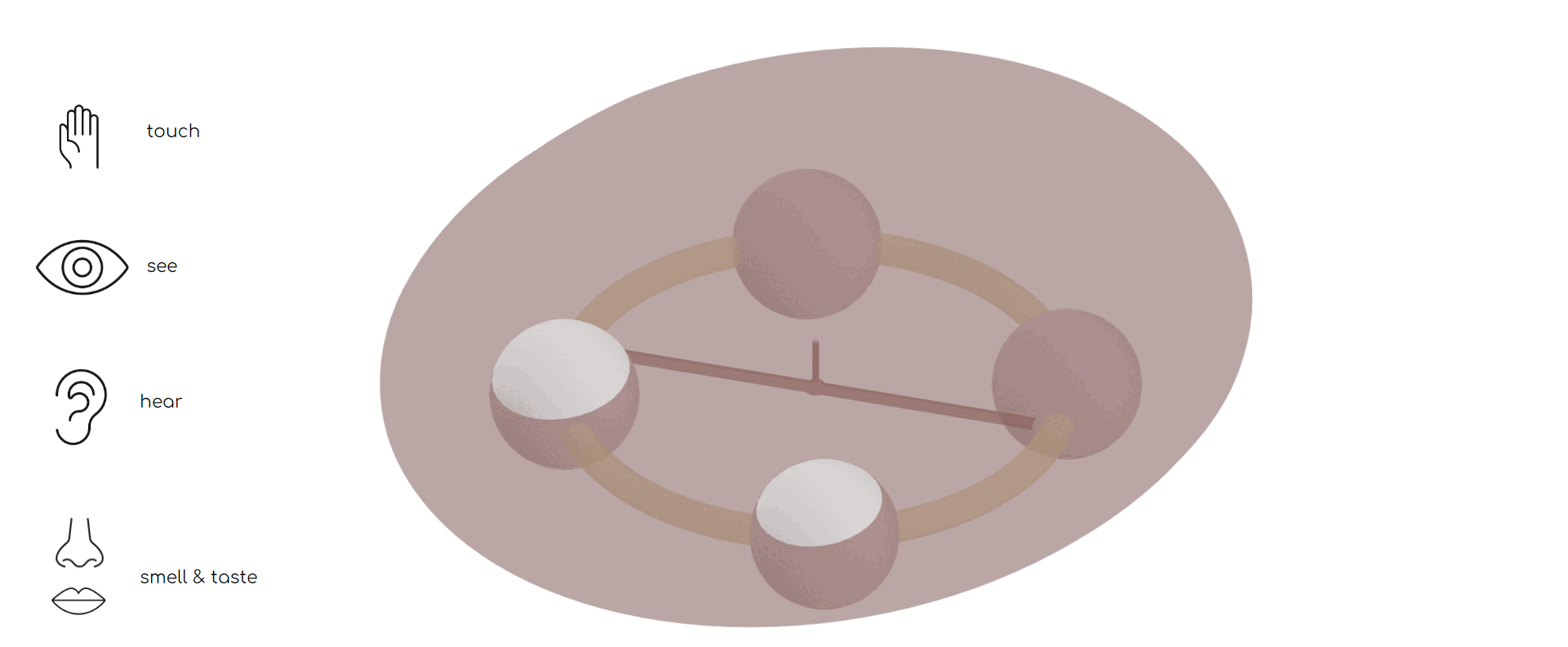
We want to block sun in the touch node to stimulate the user to feel by touching more.
On the contrary, we want to have the most light in the see node, to have more vision of light and colors.
In the hear node, again we limit the light, because we want to user to focus on hearing.
In the smell and taste node, we aim to have plantation to have various scents, and edible plantation. Therefore it has relatively less light, but enough light for the plants inside.
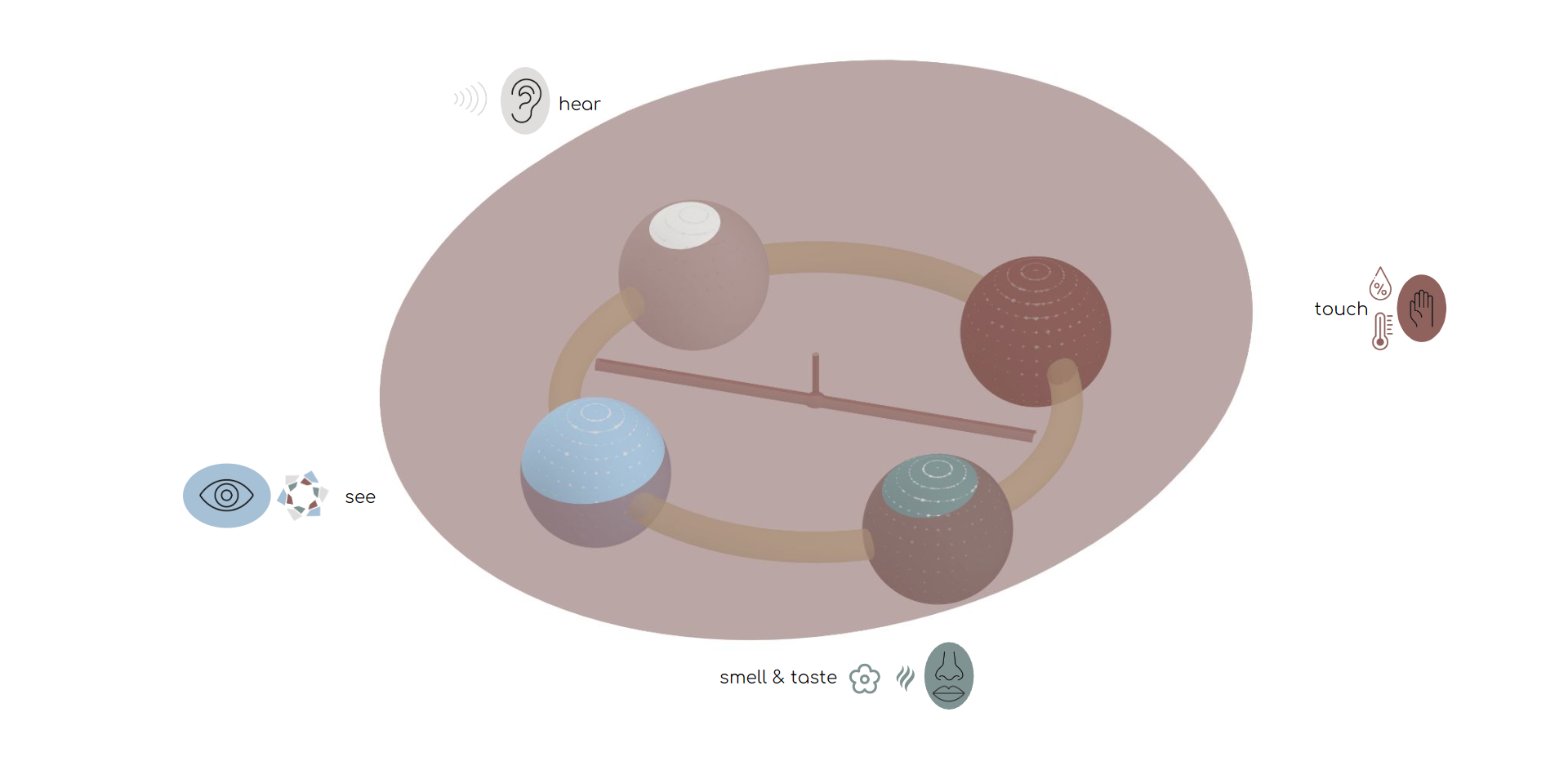
Our second parameter is the size of nodes. We try to keep them as equal as possible, however since we want to emphasize the single acoustic space in the hear node, we have it larger than the other nodes.
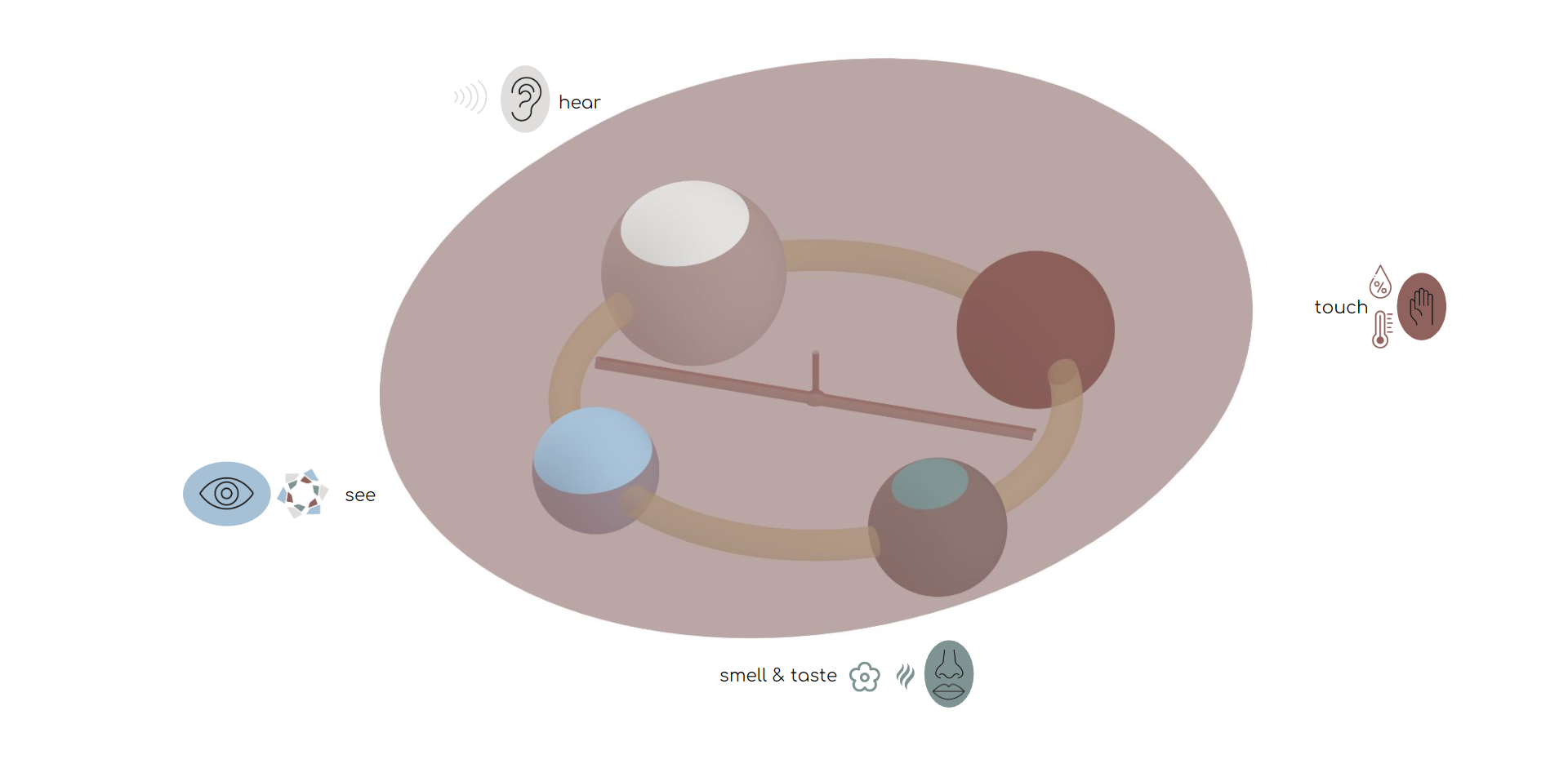
After achieving our four spheres of senses, and the main torus, we create an encapsulating shell, which determines the shape of our proposal. Then we proceed in two directions shaping our nodes, first, we utilize the shell above main path to create platforms that are cantilever structures.
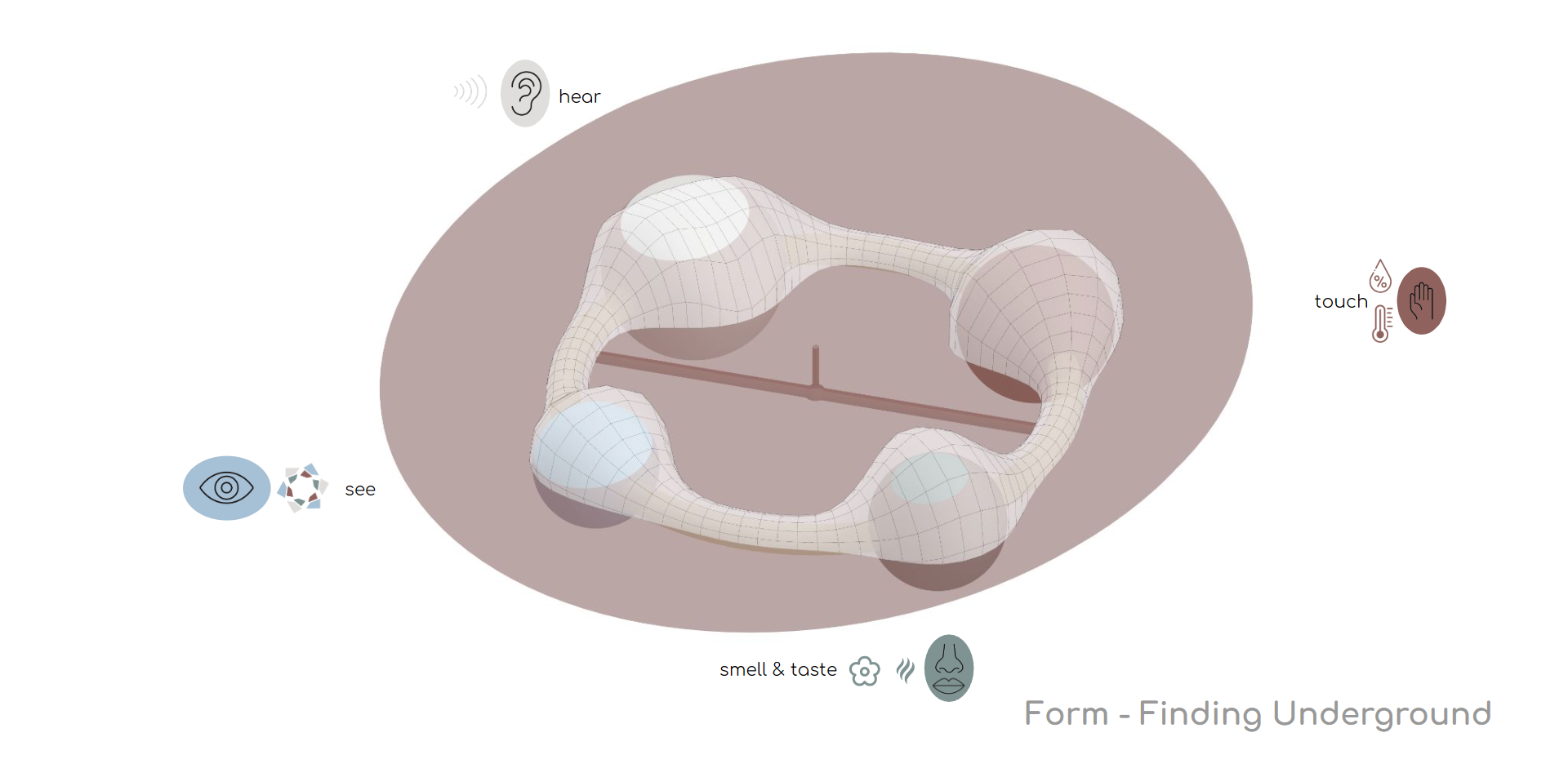
The layout of the platforms above main path determine the frequency and the partition in the nodes, affecting our experience of a holistic space in the node.
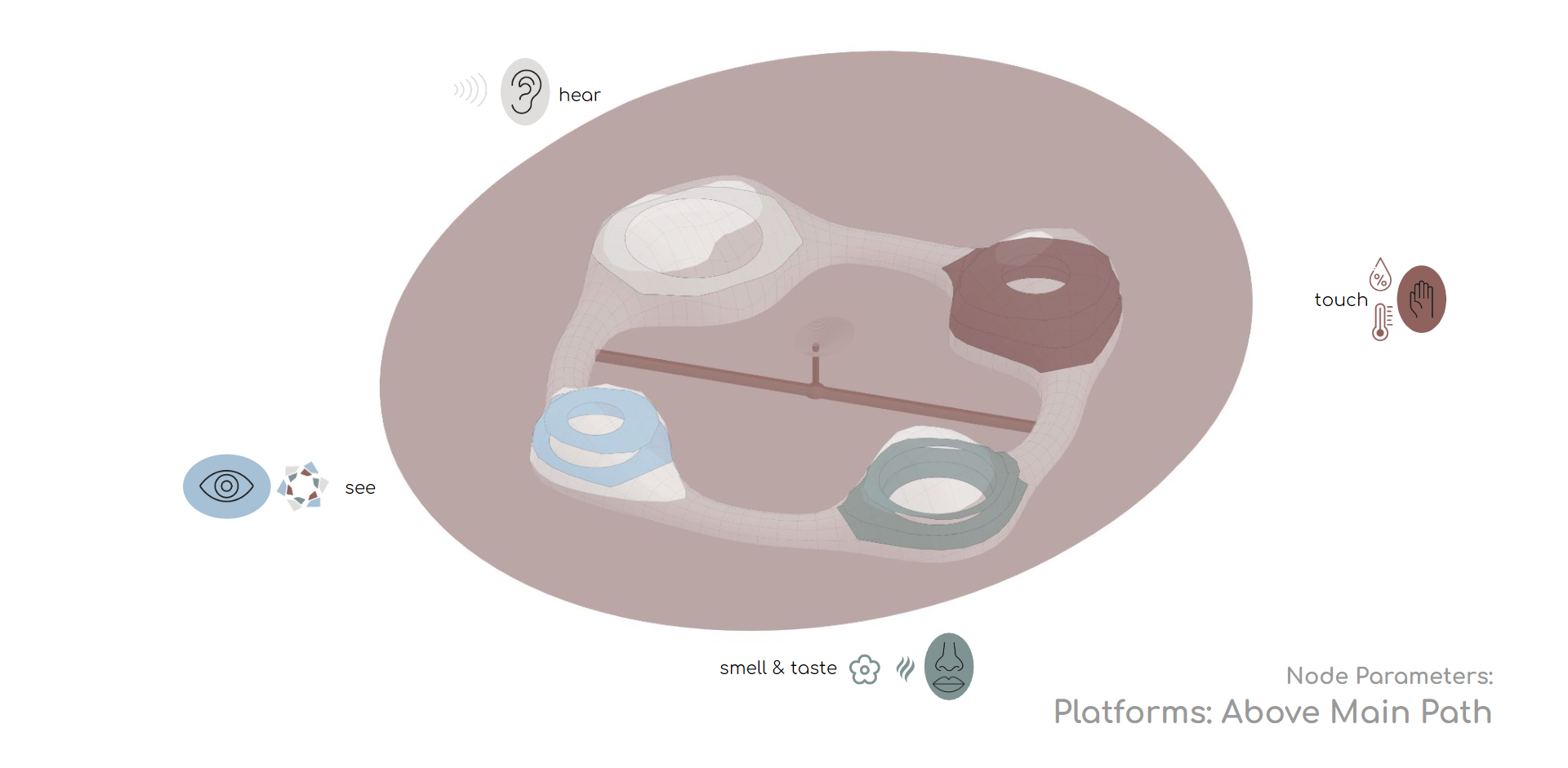
The number of platforms below main path, which determine the terracing shape of the topography have a very similar role, but they also affect the verticality of the node, where verticality stimulates movement.
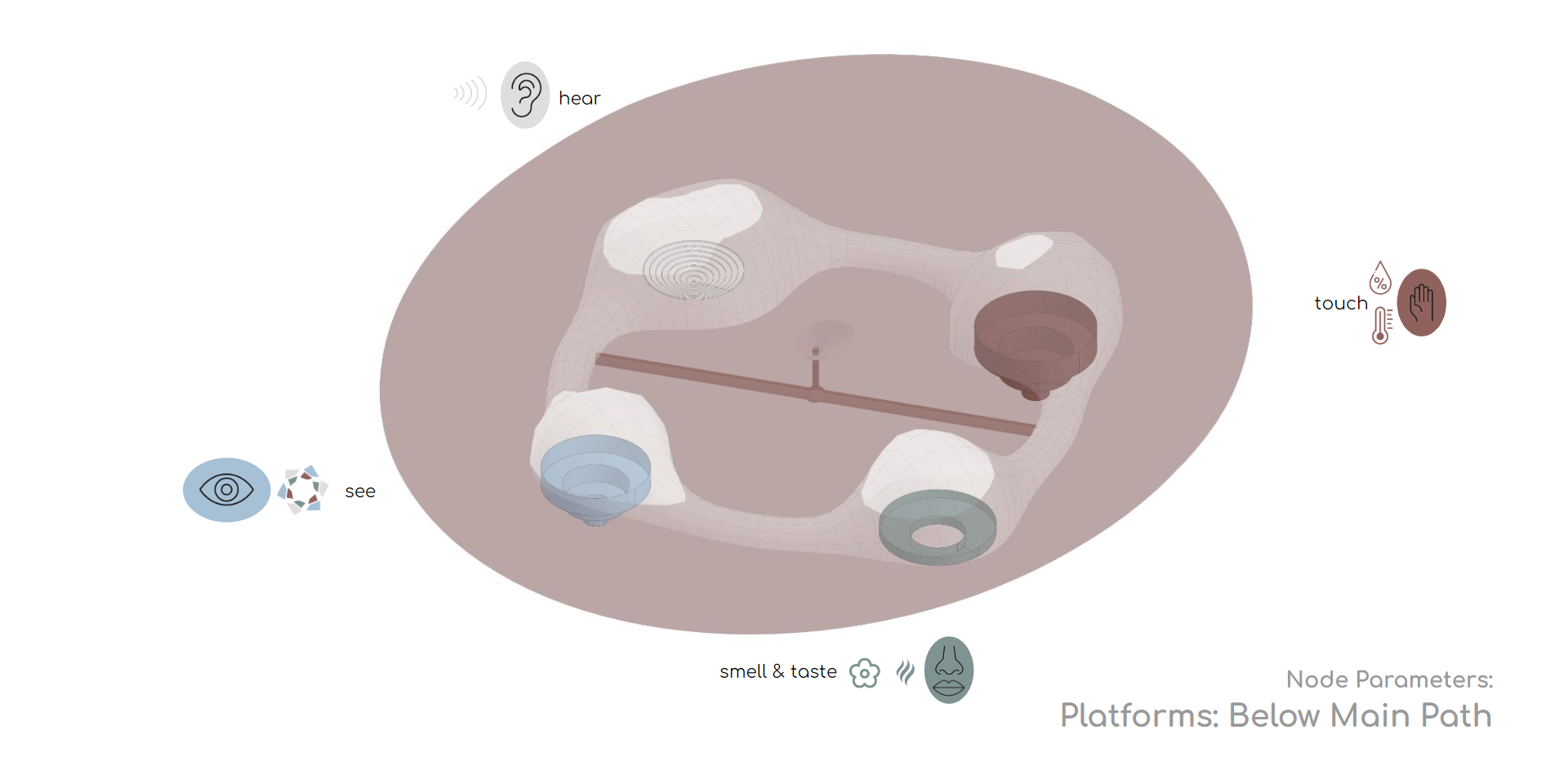
Then we add the vertical circulation element, which is a spiral ramp for all of our nodes.
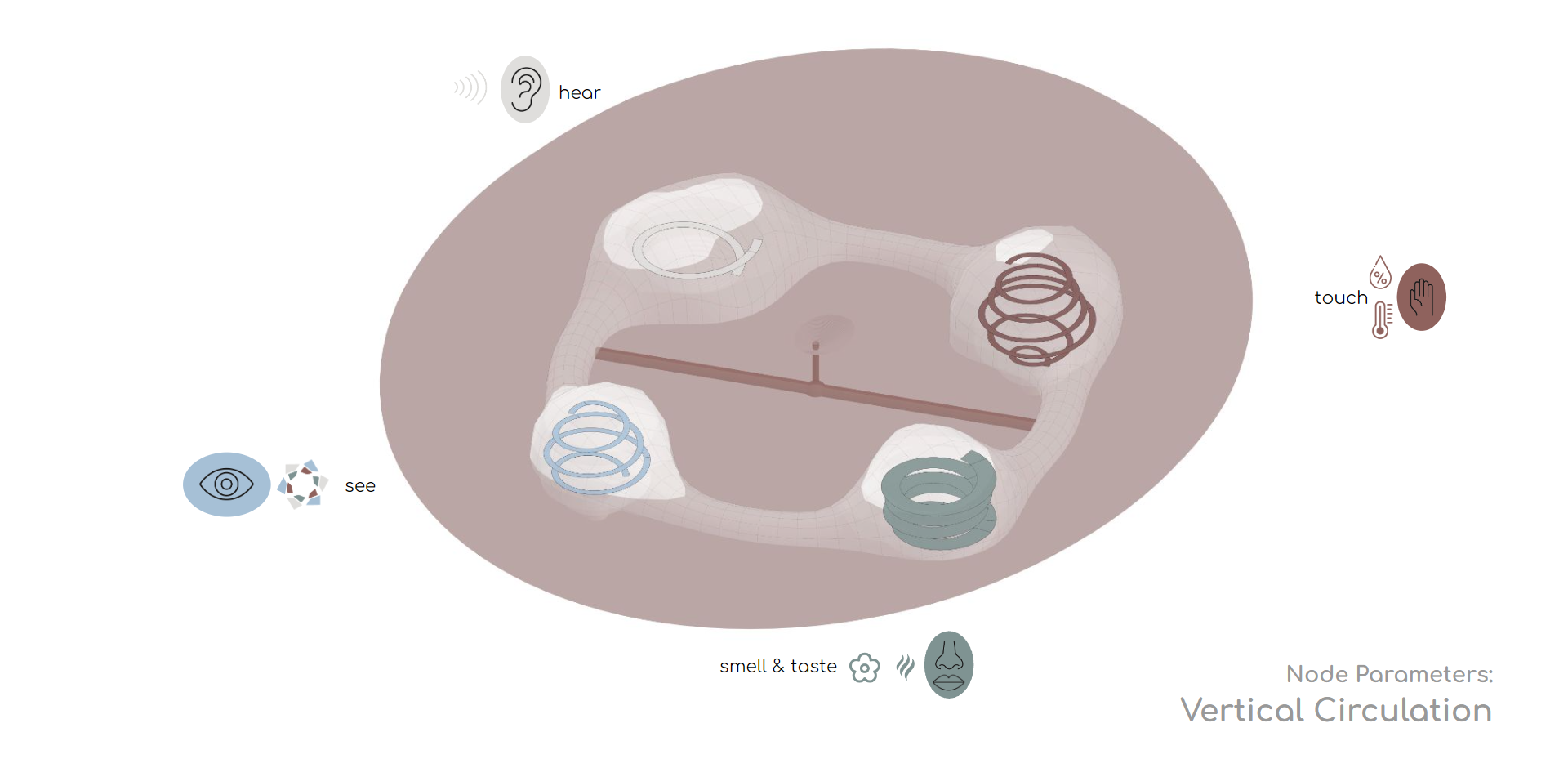
Next we create extra partitions in the nodes to further strengthen the effect of the senses.
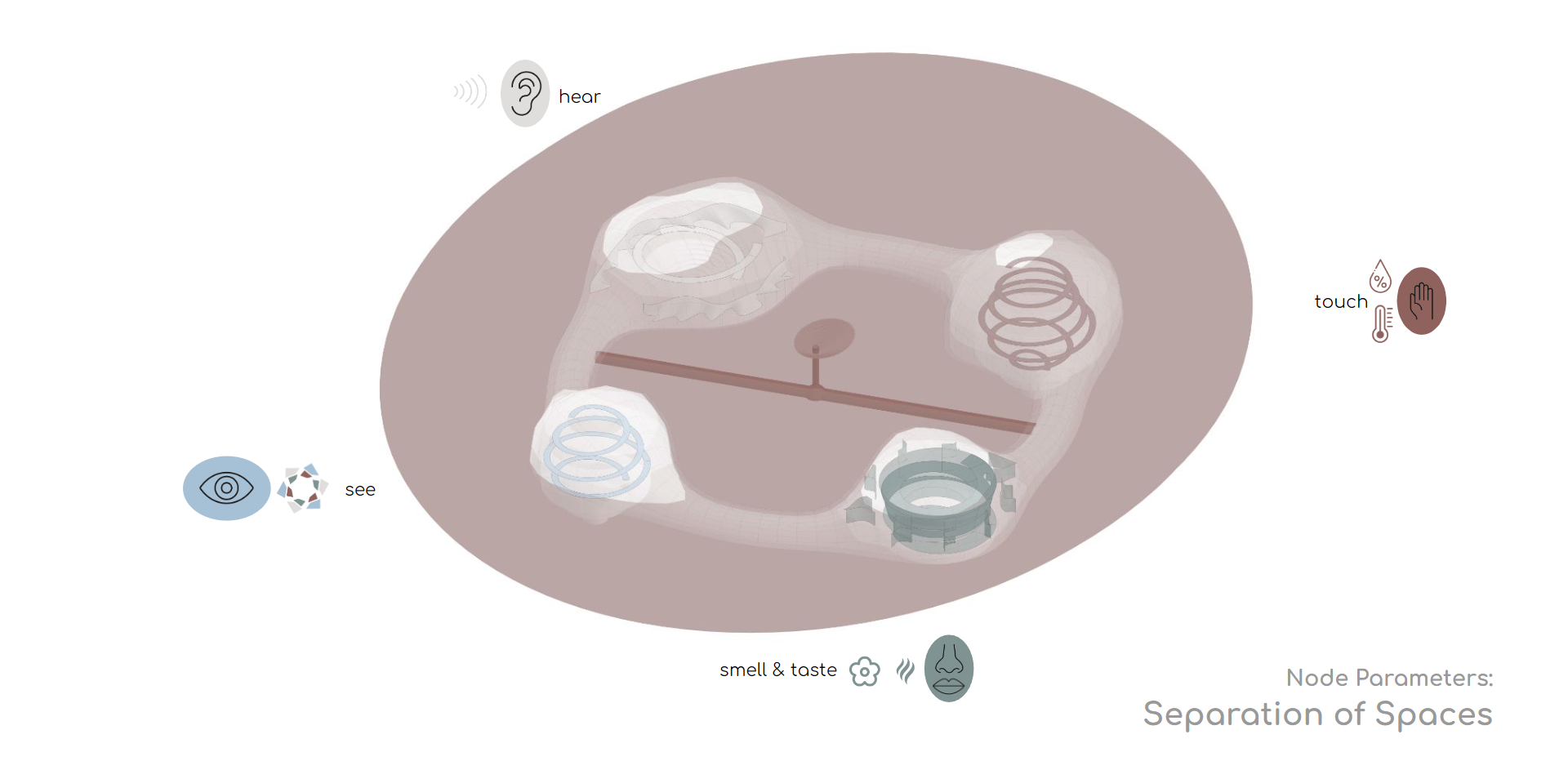
Finally we place the residential units where we aim to create a similar scheme as much as possible, each placed at the farthest location from the main path, having their privacy.
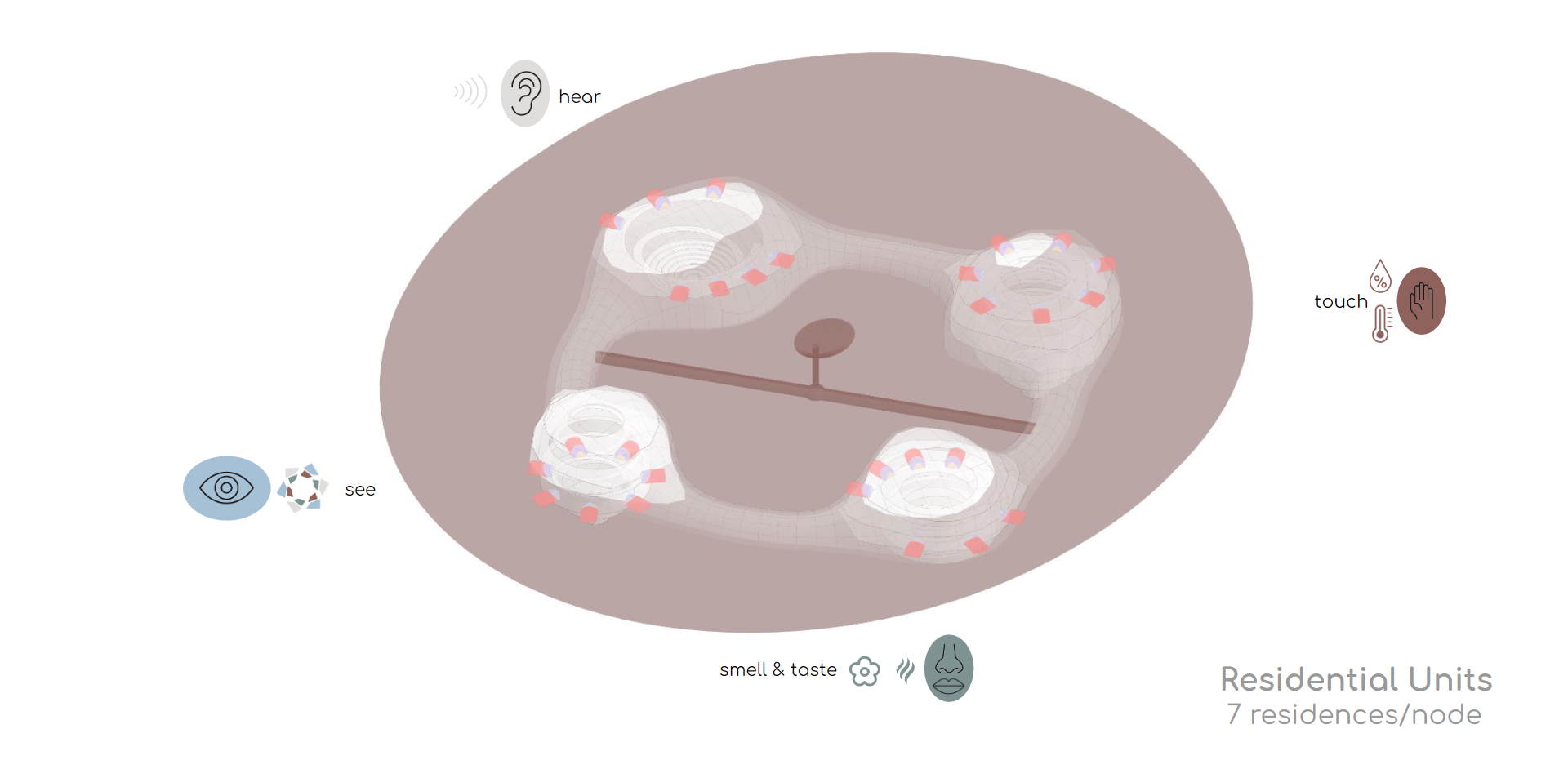
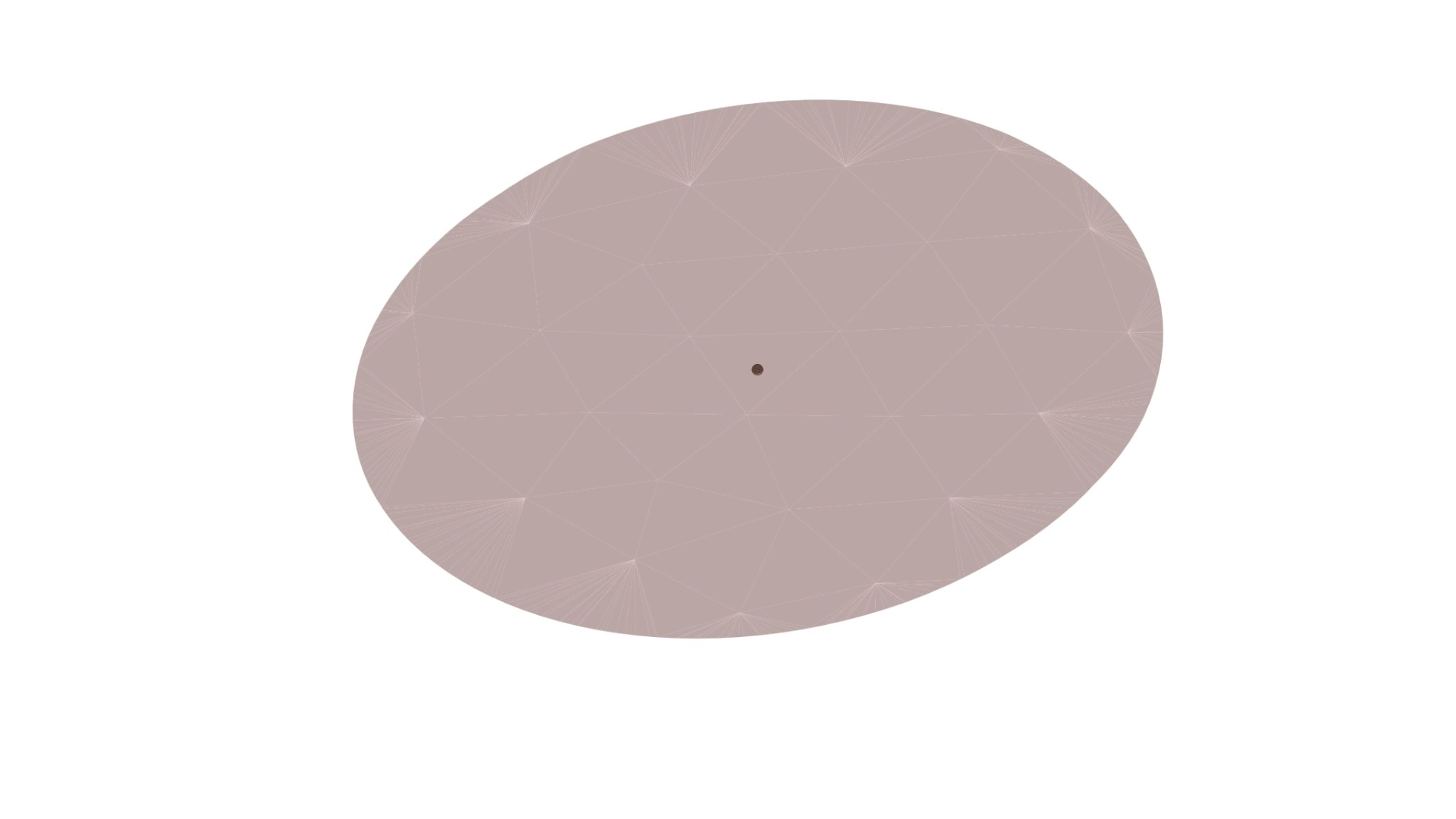
Based on this process we have generated the 4 nodes. Each node has a different layout organisation. The only values that are the same for all the nodes are the residences.
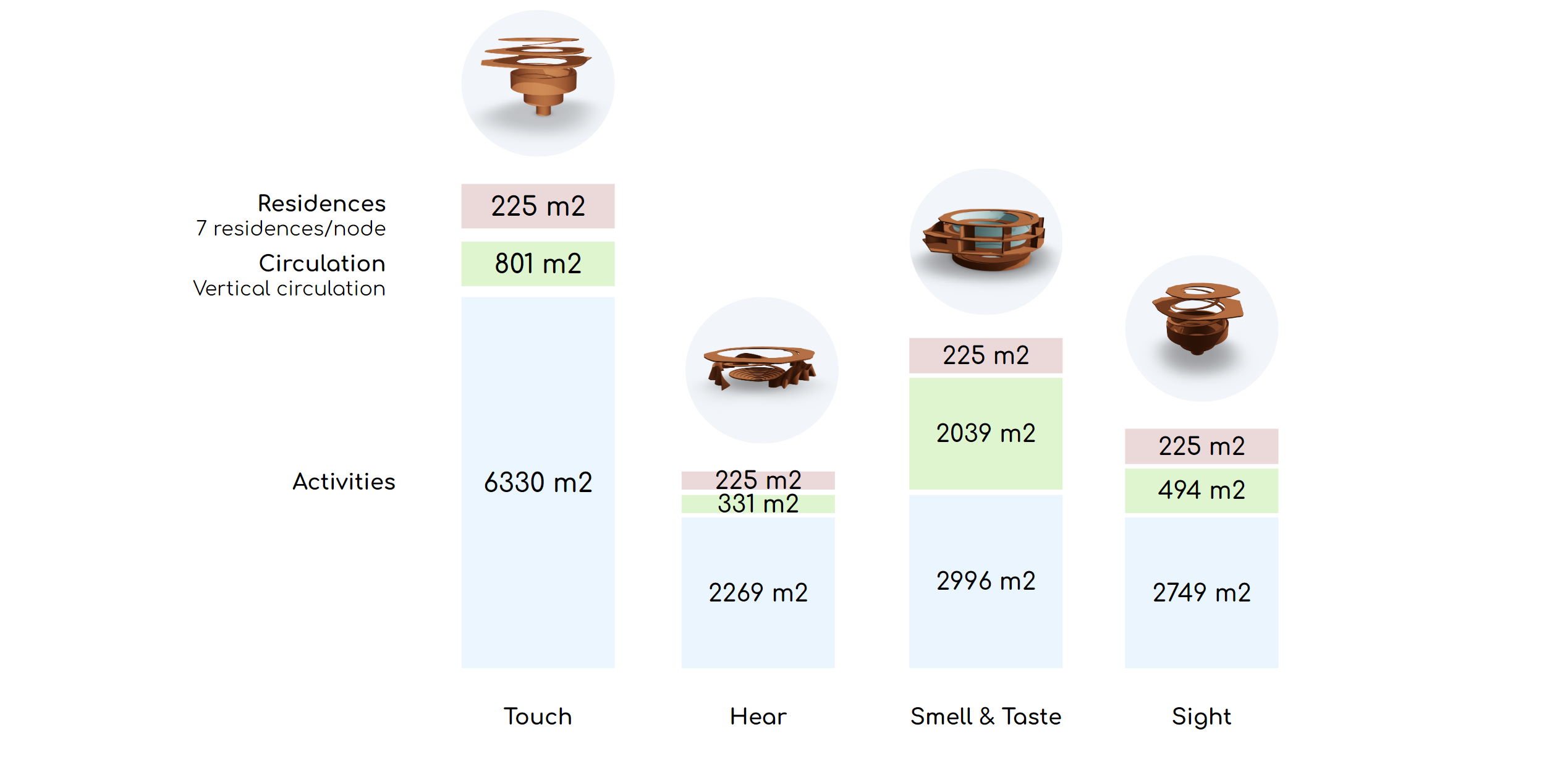
User Experience
Exterior
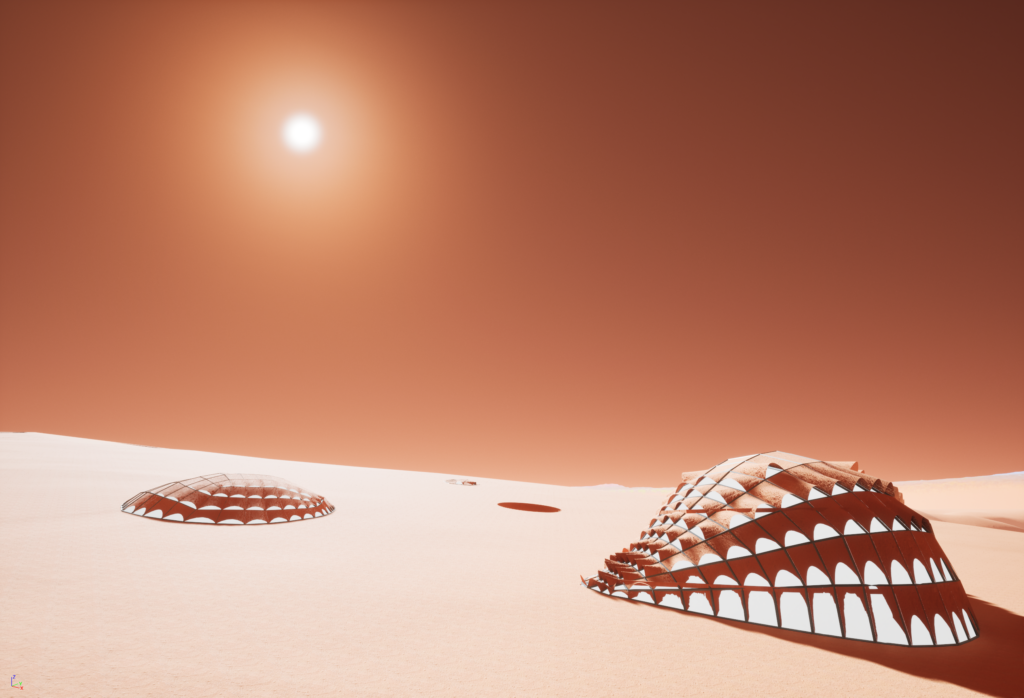

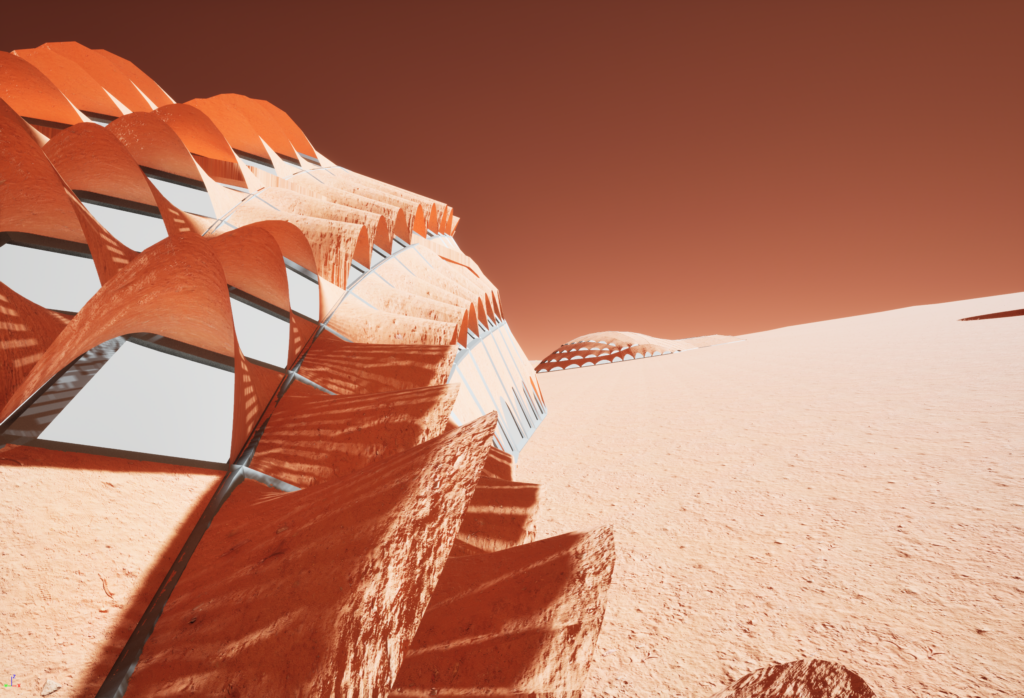
Touch Node
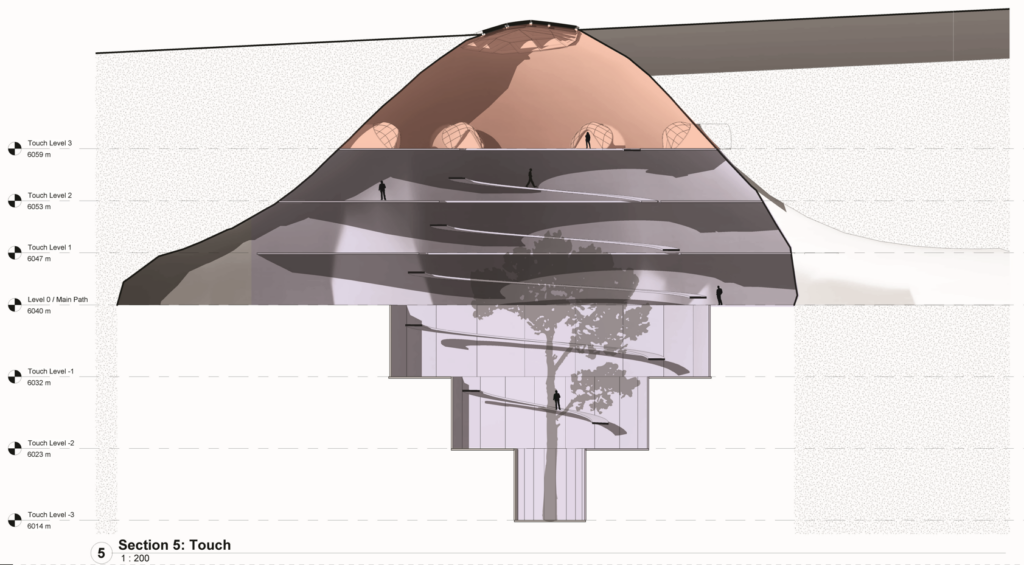
The touch area is dark and narrower, using touch as the main way to get around. The living spaces are near the top, close to a light source. The activity spaces include a variety of textures.


See Node

In the visual node, where the outer shell is the most expansive, the living quarters are strategically positioned at the center. This arrangement divides the node into a zone bathed in light and another shrouded in darkness, creating a stark contrast. This juxtaposition fosters distinct experiences related to vision, offering inhabitants a dual perspective of their surroundings.
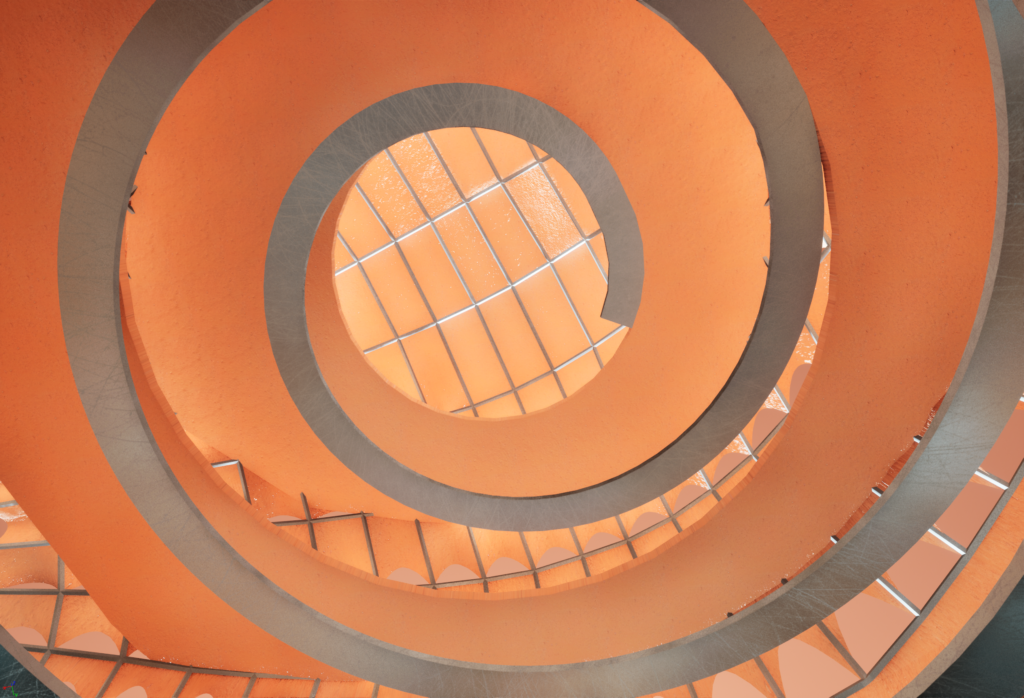
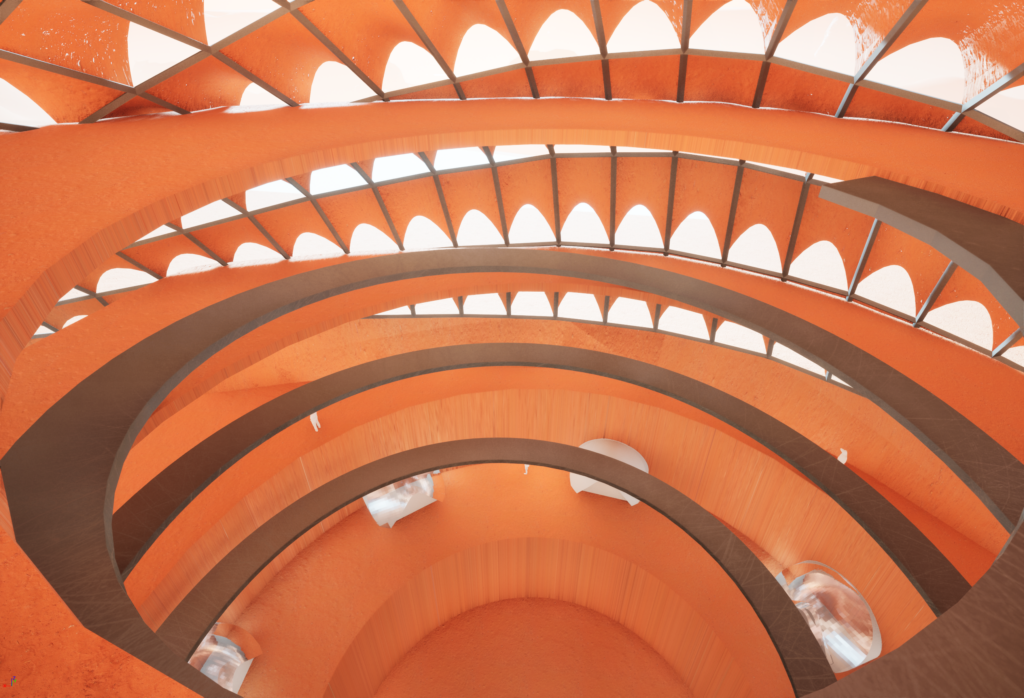
Hear Node
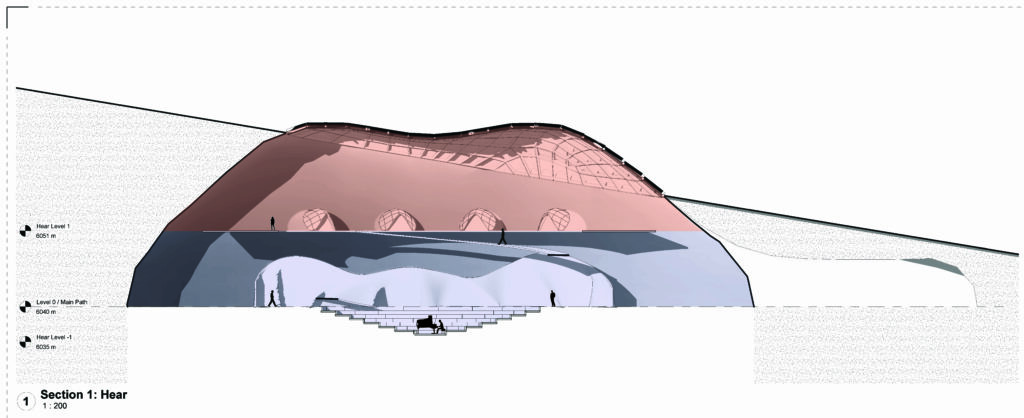
The Hearing node is designed like an auditorium, surrounded by ribbons that produce diverse acoustic experiences. The living spaces are located on the upper level, near the exterior shell.

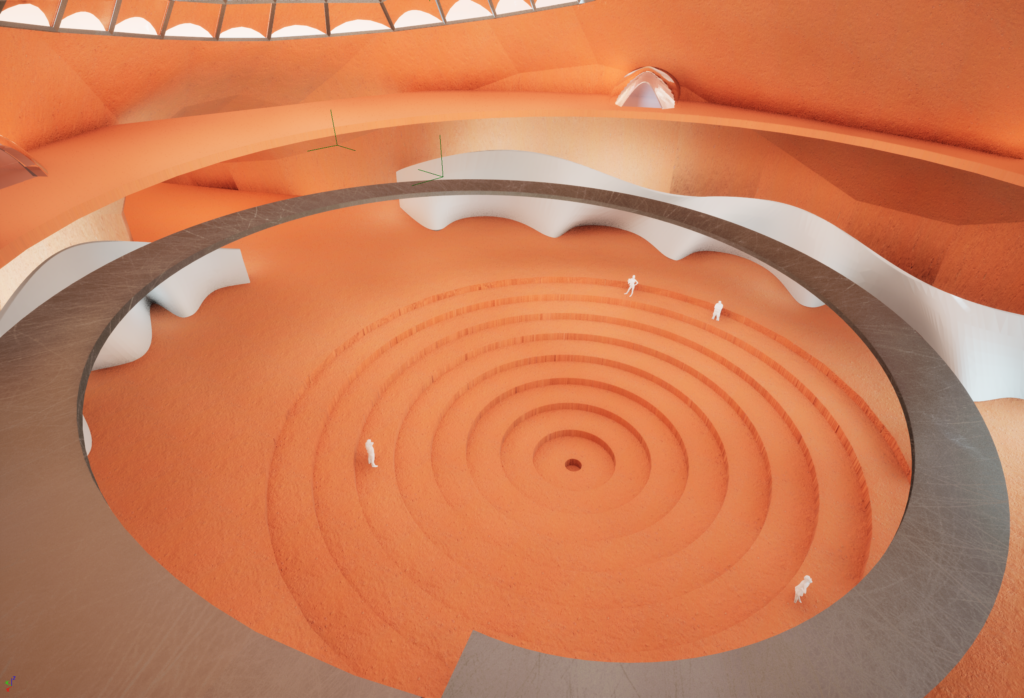
Smell & Taste Node
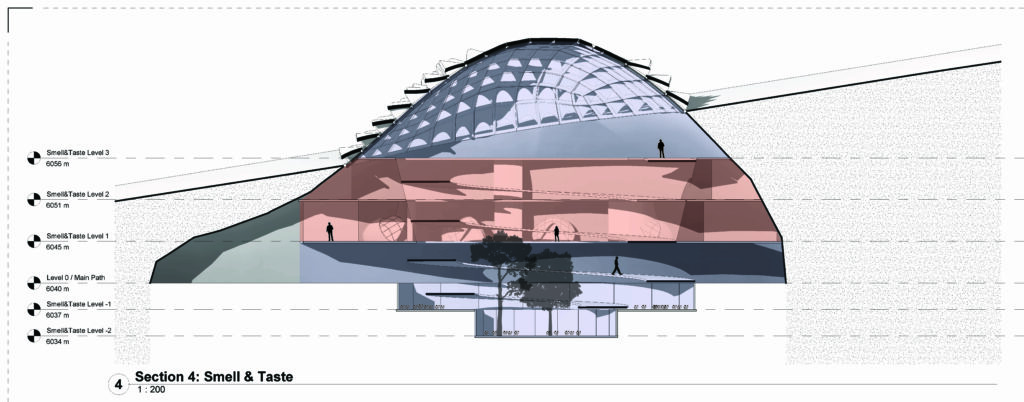
The smell and taste area works just like the sight area. Residents will experience a wide range of smells from plants and can eat fresh fruits and vegetables from around them.
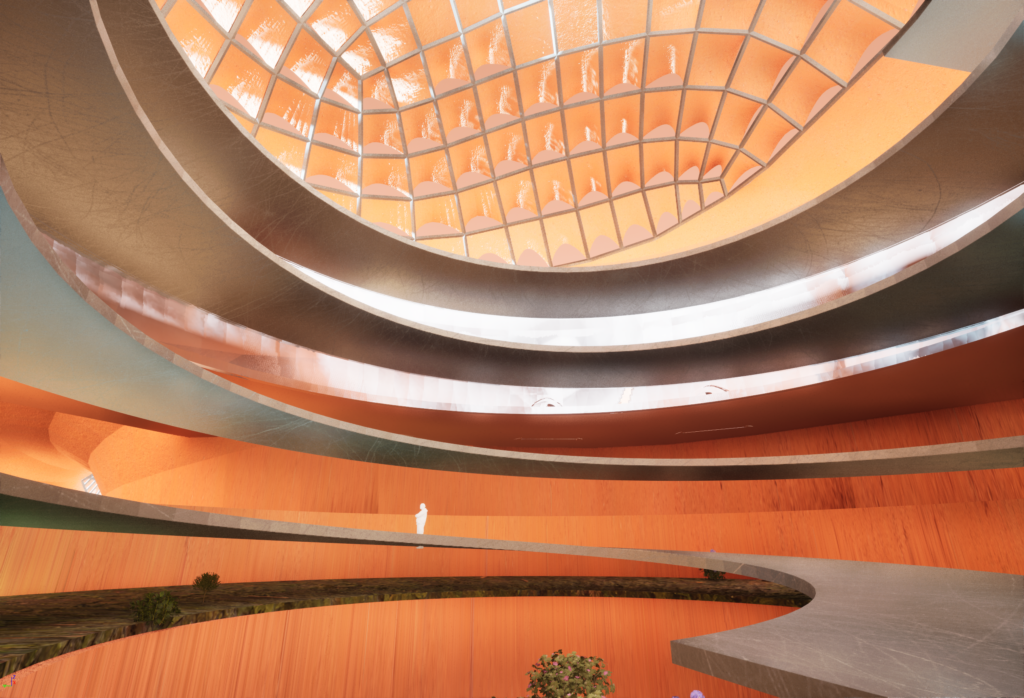
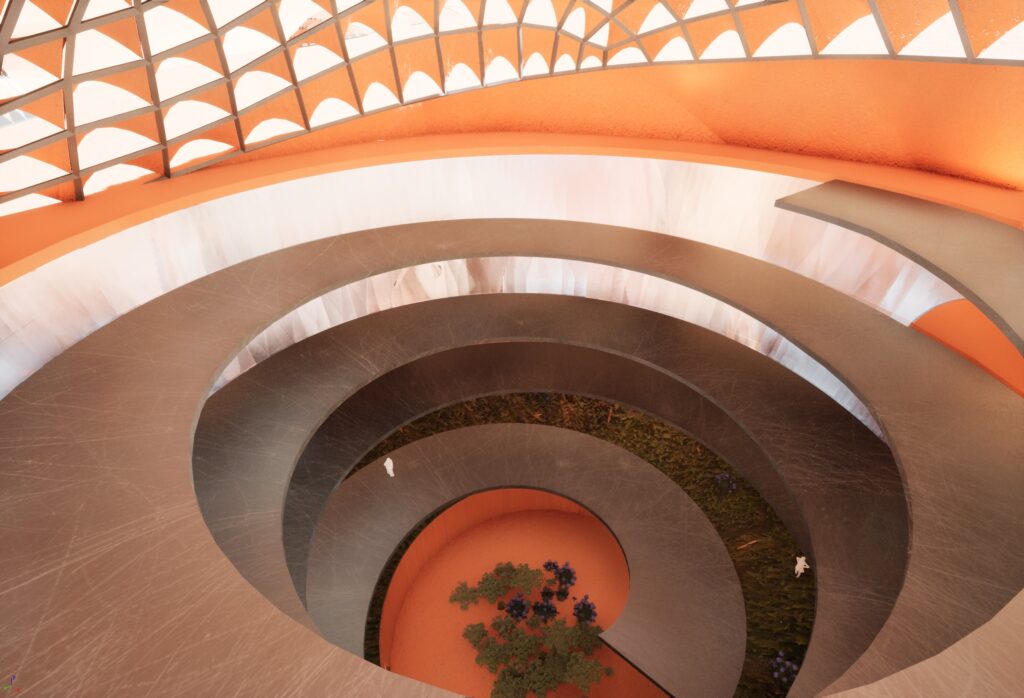
Collaboration
The process throughout the whole module can be divided into three, and the first step is conceptual design. At this stage, we all tried to be active in all of the roles to have a strong conceptual base that we all agreed on. At the second stage, which is design development, we started focusing on different areas of our design independently. Despite the challenges in collaboration using Grasshopper, speckle acted as a useful tool to actively federate our independent works and show the conflicts. At the last stage, which is production, the need for collaboration was the least and we specialized in different areas.

In our speckle model the 3 phases of construction can be seen. In phase 1 we harness the resources of the martian landscape involving excavating the Martian soil which we will then use to carve out the foundational underground regolith structure. Phase 2, we focus on accessibility and connectivity within the structure. Platforms and spiral ramps will be constructed in sequence. Finally, Phase 3 is where we form the outer shell above ground, with a 3D printed ice structure serving as both protection and insulation, as well as outer panels which maintains the integrity of the habitat against the harsh Martian environment.

The different materials that were used in the project can be seen here with the majority being re-used regolith achieved from the initial carving.

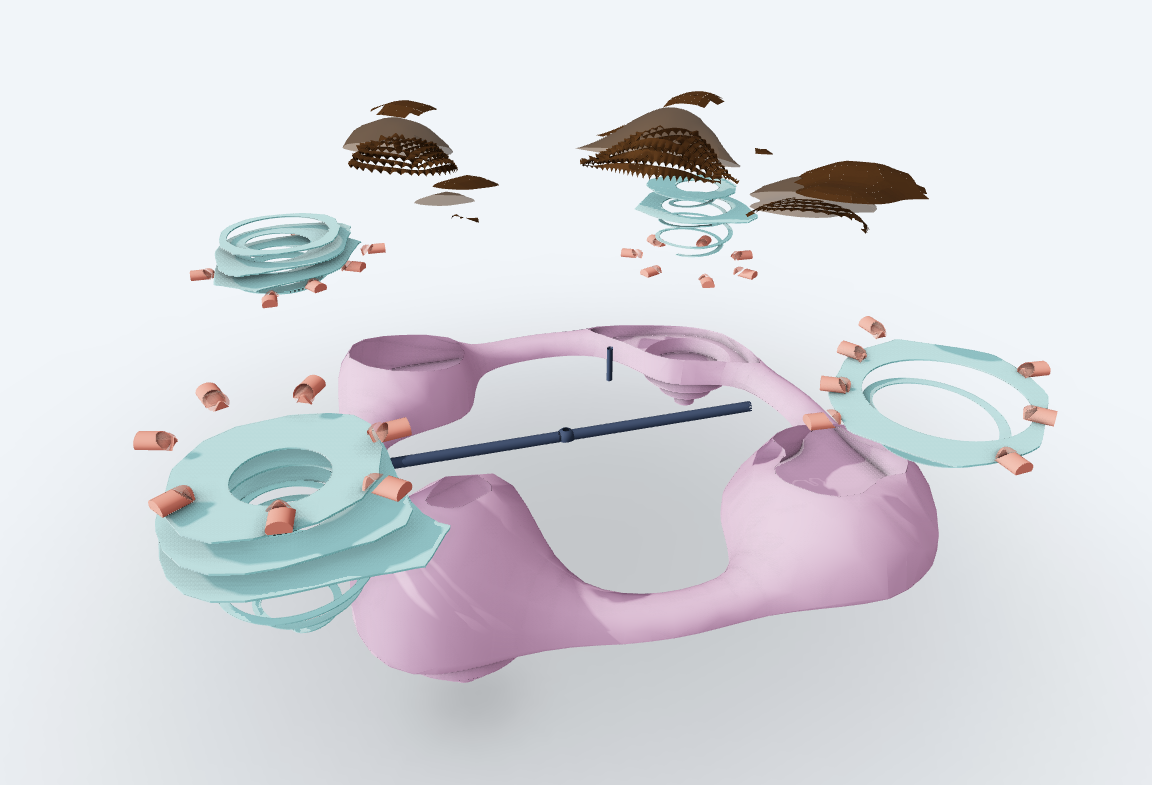
BIM Documentation
